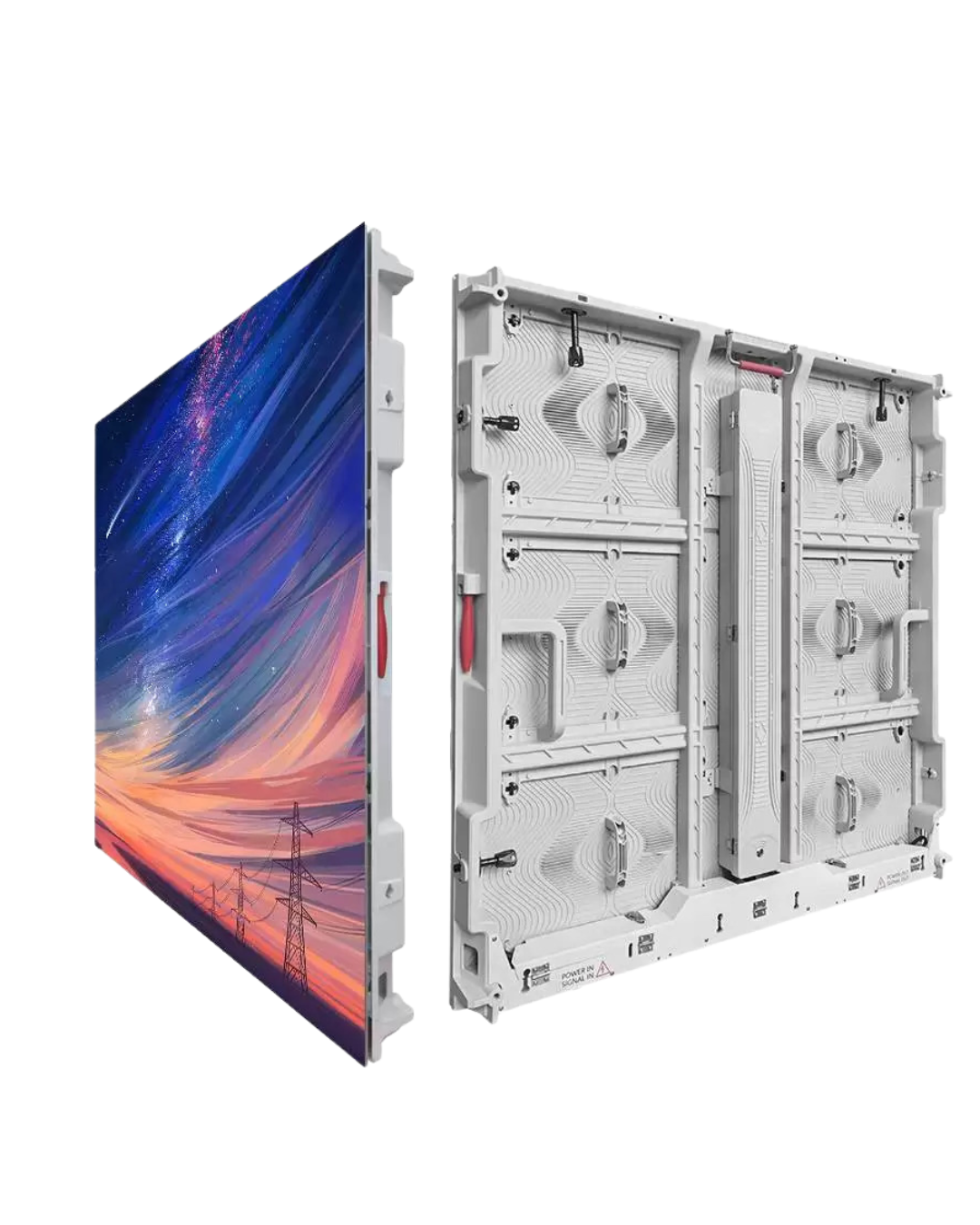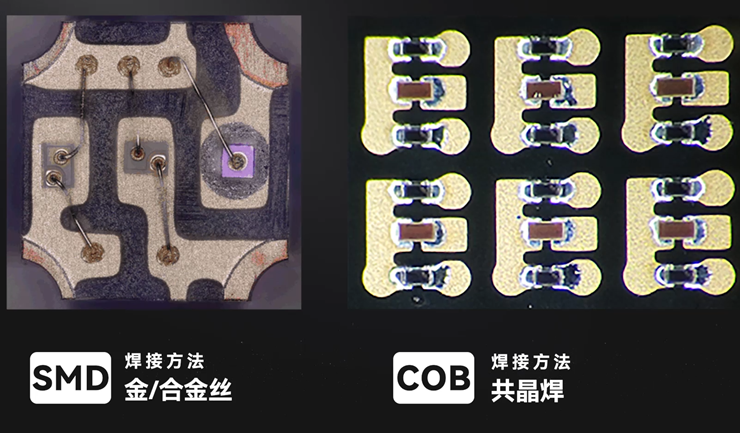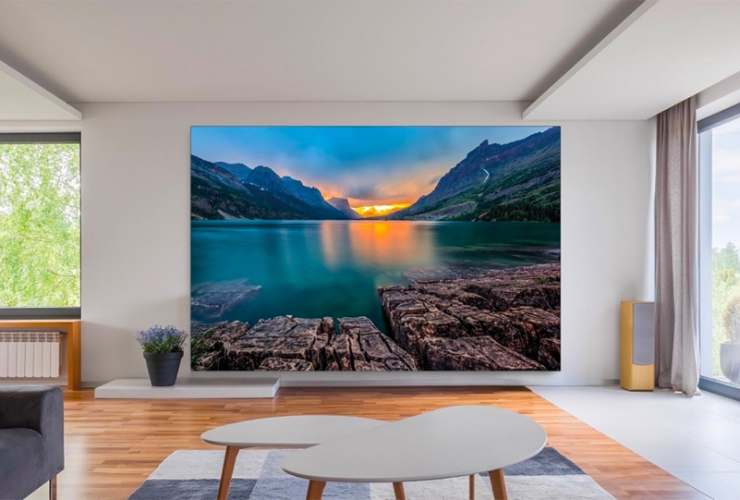When you consider installing an outdoor LED screen, whether you are doing it as a storefront, an event, a billboard or a community space, it is possible to get lost in specifications and choices. Yet, it does not need to be complicated to select the right one.
Here’s what actually matters when picking the right outdoor LED display for your project.
1. Make Sure It’s Bright Enough to See During the Day
Outdoor screens compete with sunlight. If the screen isn’t bright enough, it’ll look washed out or completely invisible.
- Go for at least 5,000 nits of brightness for shaded areas.
- For direct sunlight, 7,000 to 10,000 nits is safer.
- Some screens automatically adjust brightness depending on time of day, which helps save energy too.
If the screen’s hard to see during the day, none of the other features matter.
2. It Has to Survive Outdoors, Not Just Look Good on Paper
Rain, dust, heat, cold—your screen will deal with all of it.
Here’s what to check:
- Look for an IP65 rating or higher. That just means it’s sealed tight against water and dust.
- Make sure the screen can handle heat and cold. Most good ones work fine between -20°C and 50°C.
- Go for durable materials like aluminum or treated steel, especially in harsh weather zones.
This matters even more if you’re placing it near a green wall or vertical garden, where humidity and irrigation systems add extra moisture.
3. Choose the Right Resolution for Where People Will Stand
Resolution is tied to something called pixel pitch. Don’t worry about the term—just remember this:
- The closer people are, the sharper the screen needs to be.
- The farther away they are, the bigger the pixels can be (and the lower the cost).
Here’s a cheat sheet:
- P3.9–P6: For people standing close, like at events or bus stops
- P6–P8: For medium distances, like building signs
- P10+: For billboards or anything far from the viewer
Don’t overpay for high resolution if no one will stand close enough to notice the difference.
4. Know Where and How You’ll Install It
Screens aren’t plug-and-play. They need the right setup.
- Will it hang on a wall, sit on a frame, or stand on its own?
- Do you have space behind it for maintenance, or does it need to open from the front?
- Can your structure handle the weight and wind pressure?
If you’re putting your LED outdoor display near landscaping or a green wall, make sure the airflow and visibility aren’t blocked.
5. Pay Attention to Power Usage
Big screens can pull a lot of power. That adds up—especially if it’s running all day.
Ask your vendor:
- How much electricity does it use per square meter?
- Does it have power-saving features like auto-dimming?
- Are there energy-efficient versions available?
Over time, a slightly more efficient screen can save you real money.
6. How Will You Manage the Content?
Before buying, think about how you’ll control what’s on the screen.
- For live events: you’ll need real-time input like HDMI or SDI.
- For ads or schedules: a built-in media player or cloud-based system is easier.
- Want to update it remotely? Look for screens that support Wi-Fi or 4G updates.
If you’re running multiple LED outdoor advertising screens, centralized control can save tons of time
7. Don’t Skip Vendor Support and Warranty
You want a screen that works—but when something breaks, you also want support.
- Ask about the warranty: 2–3 years is standard.
- Check if they keep spare parts in stock.
- Do they offer local support or just ship from overseas?
A cheaper screen without good support can cost more in the long run.
8. If It’s Near Plants, Think About the Environment Too
If your display is near a green wall or part of a vertical garden, make sure the two elements work together, not against each other.
- Screens should be sealed to handle humidity and irrigation.
- Make sure the greenery doesn’t block the screen or reduce airflow.
- Design the setup so both the screen and plants look good all year.
This combo can make a space look modern and vibrant—if done right.
In Short
Choosing the right outdoor LED wall isn’t about picking the most expensive or most high-tech option. It is a matter of fitting to your real requirements: where is going to be installed, who will see it, how will you use it and how will you preserve it.
When you give attention to brightness, longevity, resolution, installation, lighting, and content management, you will be left with a screen that works, serves longer, and requires low costs with regards to repair.
FAQ’s
1. Are LED walls waterproof?
Ans. Outdoor LED walls are waterproof and weather-resistant, usually rated IP65 or higher. Indoor LED walls are not and should only be used in dry areas.
2. Can any TV be used for a video wall?
Ans. No, regular TVs aren’t built for video wall use. LED video walls use specialized panels designed for seamless tiling, higher brightness, and continuous operation.
3. What is the viewing distance for LED video wall?
Ans. It depends on pixel pitch. As a rule of thumb: a P6 screen looks best from 6+ meters away, while P10 is ideal for 10+ meters.
4. How much does a LED video wall cost?
Ans. Prices range widely—from $5,000 for small indoor walls to $100,000+ for large outdoor setups. Size, resolution, and installation all affect the cost.
5. Why are LED video walls so expensive?
Ans. They use high-end components, are built for 24/7 use, and must handle heat, brightness, and weather. You’re paying for performance and durability.





